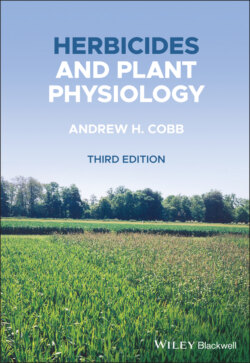Читать книгу Herbicides and Plant Physiology - Andrew H. Cobb - Страница 13
1.1 Introduction
ОглавлениеThe human race has been farming for over 10,000 years. Weeds have been an unwelcome presence alongside crops ever since the first farmers saved and planted seeds in the region that is now present‐day Turkey and the Middle East. Indeed, when these early farmers noticed a different plant growing, decided they did not want it and pulled it up, they were carrying out a form a weed control that is still used today: hand roguing.
But what are weeds? Weeds are all things to all people, depending on the viewpoint of the individual. To some they are plants growing where they are not wanted; to others they are plants growing in the wrong place, in the wrong quantity, at the wrong time; and to some they are regarded as plants whose virtues have yet to be fully discovered! The need to control weeds only arises when they interfere with the use of the land, and this is usually in the presence of a crop, such as in agriculture and horticulture. Weed control may also be necessary in other situations including amenity areas, such as parks and lawns, in water courses, or on paths and drives where the presence of plants may be regarded as unsightly. It should not be overlooked, however, that weeds contribute to the biodiversity of ecosystems and should only be removed when financial or practical implications make their presence unacceptable. With this in mind an appropriate definition of a weed is:
Any plant adapted to man‐made habitats and causing interference of the use of those habitats. (Lampkin, 1990)
Or
A plant whose virtues remain to be discovered. (Emerson, 1912, see https://theysaidso.com/quote/ralph‐waldo‐emerson‐what‐is‐a‐weed‐a‐plant‐whose‐virtues‐have‐never‐been‐discovered)
